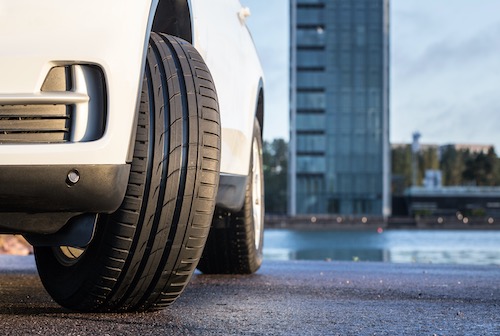All-weather tires are approved for winter use. This is because they hold the “Three Peak Mountain Snowflake” emblem which signifies that they have passed required performance criteria in snow testing and are thereby considered severe snow service rated. This is the same emblem held by winter tires. All-weather tires with this emblem are thereby approved for winter use. All-weather tires have one great advantage over winter tires in that they can be used year-round which takes away the worry of changing into winter tires. This is a great advantage in areas where winter can arrive abruptly. In addition, advances in all-weather tires make them just as good on snow and ice as dedicated snow tires. This is because with improvements in the rubber compounds and tread patterns they are able to handle the most severe winter conditions.
The option to use all-weather tires instead of winter tires allows for a much more flexibility as whenever winter arrives in the area where you live, you will be prepared. If wanting to invest in dedicated winter tires then the general indications for when to change into winter tires is when the temperature drops near freezing which is vague as many areas might have weather that is unpredictable with a cold front moving in quickly, that is then is followed with warmer weather. This can be quite tricky as in many areas in the United States there is not a clear-cut time for when winter is there to stay. With all-weather tires you can make the transition between fall and winter with no worries while resting assured that you will have reliable winter grip.
If considering studded tires then this becomes even more complicated as each state in the United States has different laws for their use. There are some States that allow their use as early as September while others not at all. There are also some States only allowing rubber studs while others allow both metal and rubber studs. When to put them on depends on where in the United States you live. This is something that is not a problem if using all-weather tires.
Whether you decide for all-weather tires or winter tires you need to make sure you follow the manufacturer’s recommended tire dimensions for your make and model of car. This is because only with the right dimensions can you be guaranteed the best performance of your vehicle. In other words, if the recommended tire dimensions for your car is 215/70R16 then you would need to install either 215/70R16 all-weather tires or 215/70R16 winter tires. Keep in mind if you do install winter tires instead of all-weather tires, it is important that winter tires are installed in sets of four to help maintain control and stability of your vehicle in winter conditions.
You should choose all-weather tires or winter tires if you live in an area that has severe winter weather as both these tires have passed the performance criteria for snow and ice.
For more information regarding all-weather tires, visit: nokiantires.com
